A word about Joseph Thomas
At the age of 9, Thomas got a Govt of India merit scholarship to study at the Lawrence School, Lovedale. He was first in academics throughout. Completed his Senior Cambridge in 1957, setting a school record and was awarded the President’s Medal for best all round student. Joined NDA three weeks later. Continued to retain his top position at the Academy, and was awarded the Silver Medal in the XIX course, for standing first in the course.
His son, Ranjit Thomas, also had an outstanding academic record at Lovedale, He stood first in the school for the CBSE exam. Awarded the prize for best all round student. He then studied Electrical & Electronic Engineering at IIT Madras, standing first in EEE to win the Motorola prize. Also awarded the Governor’s trophy for best all round student. Continued to MBA and, later, did CFA (USA). Currently, an examiner for CFA.
Thomas has, indeed, worked hard and given us a brief, and yet comprehensive account of the four schools that bear the name of Sir Henry Lawrence. The institution at Mount Abu has closed down, but the other three are functioning very well till this date. In India, we have the Schools at Sanawar and Lovedale. However, since Thomas attended the latter of the two, he has given us more details of his school. It is our fond hope that someone from Sanawar will send us a similarly researched piece on school in the Shimla Hills.
With this effort, Thomas has repaid his debt to his Alma mater. In the Indian tradition, this is known as ‘guru-dakshina’ . We now look towards the Sanawarians!
-Editor
THE LAWRENCE SCHOOLS
In the 18th and early 19th centuries, the lot of British East India Company soldiers was unenviable. Wars and disease took such a toll that few survived long enough to return to England. Between 1736 and 1834 only some 10% of the East India Company’s officers survived to take the final voyage home. [ Holmes, Richard (2005). Sahib: the British soldier in India, 1750–1914. London: HarperCollins. ISBN 0-00-713753-2.]. But the most tragic feature was the fate of the children. Neglect and tropical diseases ensured that few, if any, survived to adulthood. It was Henry Lawrence’s overpowering sense of the need of some reform in this direction that led to his scheme for hill schools for these wretched victims of mismanagement.
Sir Henry Lawrence was Agent to the Governor General, North West Frontier and Resident at Lahore from 1 January 1847 to 4 March 1848. From 1849 to 1853 he was President of the Board of Commissioners in Punjab. Subsequently, he was Resident in Rajputana and, finally, Chief Commissioner of Oudh. He launched his first school project with a public meeting at Lahore on 10 March 1846. From 1844 to his death he devoted all his income, above a modest pittance for his children, to this and other forms of charity. The first school opened with 14 pupils at Sanawar in 1847. The second was established at Mount Abu in 1855. The third at Lovedale was mooted during his lifetime but established a year after his death. The last, at Ghora Ghali in the Murree Hills, was started in 1860 as a memorial to Henry Lawrence. The founder never ceased to give his closest attention to the schools, and they were among the last things he mentioned as he lay dying at Lucknow.
Henry’s aim, as he described it, was to create “an Asylum from the debilitating effects of the tropical climate, and the demoralizing influence of Barrack-life; wherein they may obtain the benefits of a bracing climate, a healthy moral atmosphere, and a plain, useful, and above all religious education, adapted to fit them for employment suited to their position in life.” The Lawrence Asylums offered an education that stressed discipline, obedience, piety, respectability, and acquiescence to a future of limited opportunity. Boys wore artillery uniforms, girls drab jackets and white bonnets, and both were divided into military-style companies that marched on parade grounds. They did not depend on Indian servants; they did most tasks themselves so that they would become “trained in industrial habits.” Lawrence envisioned his wards taking up manual trades like carpentry and smithing, creating the nucleus for a British artisanal class in India.
Honoria Lawrence
Henry Lawrence
THE LAWRENCE SCHOOL, SANAWAR
“In November of that year, 1846, Maharajah Goolab Sing offered me a lakh of rupees for the asylum. ………The money was at once funded, and still remains so. It is our only capital.
“As soon as the site was fixed, the buildings were commenced. Lieutenant Hodson took much trouble with them. In March 1847, the asylum was opened under the charge of Mrs. George Lawrence, wife of Colonel George Lawrence, with about twenty children, seventeen of them having been sent from Lahore by me : eight of them being Roman Catholics.
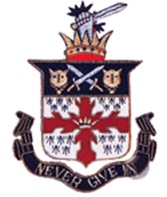 “Mrs. Lawrence very successfully superintended the asylum till the cold weather of 1847. An apothecary in the service, Mr. Healy, had been selected as medical officer and assistant master. He aided Mrs. Lawrence, and on her departure remained in full charge till the arrival of the Rev. Mr. Parker, in February 1848.
“Mrs. Lawrence very successfully superintended the asylum till the cold weather of 1847. An apothecary in the service, Mr. Healy, had been selected as medical officer and assistant master. He aided Mrs. Lawrence, and on her departure remained in full charge till the arrival of the Rev. Mr. Parker, in February 1848.
“In 1850, Sir H. and Lady Lawrence remained a fortnight on the asylum premises, and again stayed there for two months in the autumn of 1851, daily looking into all departments of the institution, and testing its working in all branches. Lady Lawrence during these visits daily talked to the girls, and evinced a mother’s interest in their welfare. Being unable to walk among them, they would flock around her litter and watch for its coming down to their play-ground.
“I have sat up till past twelve to write this letter, which gives pretty much all I can say. If you desire more, pray send me questions, which shall be promptly answered. The less said in the history about me the better, but give the credit due to my brothers George and John, to Edwardes, Hodson, and others, who from the beginning have helped us, and without ostentation have (my brothers) kept up a warm interest. H. M. L. ”
Extract from “The Lawrence Military Asylum………” Lawrence Military Asylum Press - 1858 (Free e-book) http://tinyurl.com/mgh2uy2
The parade ground at Sanawar
From these humble beginnings, The Lawrence School, Sanawar has grown to be one of the best schools in India. It is also the oldest co-educational boarding school in the world.
Sanawar is divided into four houses – Himalaya, Nilagiri, Siwalik and Vindhya. The houses compete with each other at activities such as cricket, cross country running, debating and many other activities.
The school honours its original purpose by continuing to offer a reduction in fees for the children of military families. About a quarter of the boarders are the sons and daughters of former students. Till recently, as part of its annual Founder’s Day celebrations, the school continued to troop the Royal colours. Until 1990, a significant number of school-leavers continued to join the armed forces but there has been a sharp decline in this tradition.
Sanawar’s former pupils are known as “Old Sanawarians”, OS, for short. With their “Never Give In” spirit, they have distinguished themselves in politics, bureaucracy, services, entertainment, adventure and the corporate world. A group of Sanawarians have entered the record books as they are the youngest team and the first school in the world to have conquered Mt Everest. These teenagers ranged between the ages of 15-16. Interestingly, one of them Raghav Juneja is just 15 years, making him the youngest Asian and the second youngest person in the world to scale Mt Everest. Other members included Shubham Kaushik (16), Fateh Singh Brar (16), Ajay Sohal (17), Guribadad Singh (17) and Prithvi Chahal (17).
VIDEOS AND FURTHER READING
Why we are indebted to the British empire
http://tinyurl.com/8xwuk
The British Empire’s Lessons for Our Own By Jeremy Hildreth 14 June 2005 The Wall Street Journal BRITISH EMPIRE…
The Lawrence School Sanawar – “Revival” https://www.youtube.com/watch?v=5H2n6v5g2Pw
Sanawar – 25 An Apoorva Lakhia Film
[The early history here is fiction ]
Youngest team to scale Mount Everest
Highway On My Plate at The Lawrence School, Sanawar
“Four Orphan Schools in Calcutta and the Lawrence Military Asylum Sanawar, Part 1: History,” FIBIS Journal No 22 (Autumn 2009), pages 1-14. “Part II: parents, conditions, prospects” FIBIS Journal No 23 (Spring 2010)
Twelve Years of a Soldier’s Life in India: being extracts from the letters of the late Major W. S. R. Hodson 2nd edition 1859 Google Books
“The Lawrence Royal Military School, Sanawar India” by W Jaques Steel. The Bulletin of the Military Historical Society, Issue 45, August 1961, pages 1-4.
The Lawrence School, Sanawar : A Historical Reference by Dr V K Sharma 1992
Sanawar : A Legacy by Mrs Manju Khan and Mr K J Parel, 1997
Sanawar : the Lawrence School sesquicentenary, 1847-1997, text by Harish Dhillon, drawings by Rathin Mitra.
THE LAWRENCE SCHOOL, MOUNT ABU
When Sir Henry Lawrence was Resident in Rajputana, he founded this school in 1854 at Mount Abu. It functioned as a military school till 1950. Abu Lawrence School was smaller than the other three with a capacity for just 100 students. It never received any government funding. With the departure of the British, it struggled for survival till 1950 and then gave up. The buildings lay vacant for some time till they were rented from the controlling trust to become the National Police Academy . In 1975 the NPA shifted to a new campus near Hyderabad. Since then it has been with the CRPF who run the Internal Security Academy. In 1979 the campus was finally sold to the ISA.
Main Entrance of the Lawrence School, Mount Abu building
See also https://www.facebook.com/lawrencecollege/photos/a.10151991712920851.1073741841.51522830850/10151991717305851/?type=3&theater
Mount Abu Military Station in 1872 as seen from the Residency. On the extreme left are the Offices of the Agency, and on the right is seen the roof and part of the west end of the little English church, nearly behind which is the Lawrence School
General views of Mount Abu today
VIDEOS AND FURTHER READING
http://www.indian-tales.com/pages50-59.asp
India Office Records at the British Library:
• File 21/54 Abu Lawrence School: reports IOR/R/20/A/1837 1904-1910
• Report of the Abu Lawrence School for children of soldiers for the year 1933-34. Poona: Committee of Management, 1934. IOR/L/MIL/17/5/2296 1934
http://premrao.wordpress.com/2013/06/17/mt-abu-lawrence-school/
http://www.maxgorman.net/?page_id=2/
“The Quest for the missing Lawrence School” Prabhsharan Singh Kang, https://www.facebook.com/media/set/?set=a.10151991712920851.1073741841.51522830850&type=3
THE LAWRENCE SCHOOL, LOVEDALE
Sir Henry M Lawrence pledged Rs 5000 and Rs.1,000 per annum, as long as he was stationed in India, for starting a school in the Madras Presidency. He died before the school could be established. The family was not wealthy and the pledge lapsed with his death. An anonymous person from Chennai offered the same amount and the school got going, initially in Stone house, Ooty. The Rules of LS Sanawar were adopted in their entirety. The school came into existence on 06 Sept 1858 and the first four students were admitted on 01 October of the same year. In 1860, the government assumed responsibility for the school finances.
Early in 1859, the ‘Stonehouse’ building at Ooty was purchased at the cost of Rs.22,600 for the institution. In April 1864 land of 705 acres at Lovedale, 6 km from Ooty was bought. By 1869 the buildings were sufficiently advanced to allow for the removal of the children (120 boys and 63 girls) to them from Stonehouse. In 1871 the main block was completed. In September 1871, 220 children from the Madras Military Male Orphan Asylum were transferred to Lovedale. About 100 girls of the Madras Military Female Orphan Asylum were transferred in October 1904. This completed the amalgamation of the two Madras asylums with the Lovedale Asylum.
Mr. Chisholm was the architect of the new buildings. Much of the building work was done by Chinese convicts sent to the Madras jails from Malaya where there was insufficient prison accommodation.
The boys’ part is designed in the Italian Gothic style, and is a two-storeyed construction forming three sides of a quadrangle. The clock tower, 130 feet in height dominates the campus. Although the campus is huge — probably the largest in India — the built up area is only 45 acres. The school campus is divided into Prep school (classes four to six), Junior school (classes seven and eight) and senior school (classes nine to 12). The classrooms and dormitories of these three are housed in their respective buildings.
The Preparatory School (Was Girls School till 1949)
The Clock Tower
The girls were at first placed in the building intended for the hospital. They did get their own school which functioned separately till 1949. By then there were hardly any girl students left and combined classes were started out of necessity. The girls also exchanged their school with the Preppers. Since then, come rain or shine, the girls walk to the other schools. This alone comes to 2 to 3 km per day.
The Girls School, called The Red Fort by its inmates
A major development was the opening of the hill railway from Mettupalayam to Coonoor in 1899. The line was extended unto Ooty in 1908. The Lovedale railway station adjoins the School estate. An account of the travails of travel to Lovedale in 1862 before the hill railway was opened is given below :
“Patricia Alice Thurley recalls the words of her father: ‘His paternal grandfather, John Thurley, was a groom. He was born in Royston, in the south of England, in 1818, three years after the battle of Waterloo.
In 1840, at the age of twenty-two, he joined the Army and came out to Madras. Dad had documental evidence that by 1861 he was in the 102 Madras Royal Fusiliers. For the troops, life was brutal and hard; expected survival – two years. John survived many more! Dad showed me the marriage certificate; John had made his mark – he could not write his name. The certificate was dated 1846, and the bride was Elizabeth Evans. Dad didn’t know much about her childhood, but he could recall her telling the family that she had been the daughter of John’s close soldier – friend. She was fifteen when she married. Evans, her father, had married an Indian woman, a common practice in the early nineteenth century.
John, Dad thought, must have been doing quite well in spite of the hellish conditions of the period. ‘And they were hellish.’. Only about twelve out of every hundred were permitted to marry, and not all of these were provided with married quarters, so some of the couples were forced out to the poverty of bazaar quarters, or to living on the verandahs of the barracks, with old blankets for screens.
When John (junior) was just a young lad, his father returned to England, taking his family with him.Apparently Dad could recall his father often speaking of the voyage ‘Home’. But their sojourn in England ended disastrously. Perhaps the groom , on becoming a colonial, had forgotten the restrictions of English life. There were no cheap servants to wait on a mere soldier, to assist him to live ‘in style’; no flat rooftops on bungalows on which to entertain. Perhaps he too was troubled by two souls: the old tied to traditional England; the new, colonial and adventurous, wishing for the exotic. Or did he become ashamed, in ‘Blighty’, of his partly Asian wife?
Maybe she found it impossible to manage – transported from the tropical heat of Madras to the chill dampness of England. Or was it the lure of gold in the southern land? For John suddenly, as Dad told it, skedaddled: abandoned his family and took off for Melbourne, Australia, and was never heard of again.
It seemed he either left his wife enough money to return to India, or friends assisted her, but Dad knew that when Elizabeth finally returned to Madras, she was penniless. Penniless she might have been, but she was determined that her sons would have a better education than her soldier-husband. Someone must have told her about the Lawrence Asylum way up on the Nilgiri Hills in the south and the dedication of Sir Henry Lawrence in providing for abandoned army children. To this Asylum, she had to go.
Never mind that Madras was over five hundred miles away or that she could only afford a bullock cart. Travelling short distances each day, crossing hot plains sometimes walking all night – it was cooler for the children – winding their way through malaria-infested jungles, beating tins each night to keep away elephants and tigers, they must have journeyed for almost a month, or more, Dad thought. And eventually when the carts could go no further, because the roads were too steep, she climbed to mountain passes nearly 6,000 feet high. And at the end of this incredible journey, she deposited the boys on the doorstep of the mountain asylum. They had to be educated properly. Where else could she go?”
In 1913, the name of the school was changed from Lawrence Asylum to Lawrence Memorial School. On being presented the King’s Colours and accorded royal patronage in 1922, the name of the school was changed in 1925 to the Lawrence Memorial Royal Military School. Soon after India’s independence, the school was handed over to the civilian authorities of the Government of India in 1949. Subsequently the name of the school was changed to The Lawrence School, as it is known today. The school is also simply referred to as “Lovedale”.
 The school church built in 1911
The school church built in 1911
Rocky & Mayur at Lovedale
Presentation of Indian Colours in 1949 (Photo – Kevin Phillips)
Mrs. V. Enos & Mrs Mary Koshy (retired teachers), First Lady Mrs Thangam Venkateswaran, Ms Isabelle Lawrence (daughter of the current Sir Henry Lawrence)
The band at Founder’s 2006
Bandmaster Benny & Author (2006)
Horse Riding is a Major Sport
The ground just below the main building is used for the floodlit PT Display
The motto of the school is “Never Give In” – to pursue a task to its fullest, giving one’s best at all times. Moira Breen and the Malik twins — three generations apart — exemplify this spirit.
Moira says :
This photo of me was taken for our Church Directory in 2011 when I was 87 years old. I am now 90 years old. I was in the Lawrence School for 8 years from Feb 1932 to Dec 1939. I received a very good education – academically and otherwise – teaching me to be self reliant. After obtaining the Senior Cambridge School Certificate with a first class pass, I entered Queen Mary’s College, University of Madras and four years later I graduated with a Bachelor of Science degree – first class pass. I worked for 5 years in India in two colleges – Vellore Medical College and Women’s Christian College - as a teaching laboratory assistant. I then emigrated to the USA obtaining Master’s degree from Vassar College, Poughkeepsie N.Y. in 1951 and a doctorate in Biochemistry from Northwestern University Medical School, Chicago, Illinois in 1960. Subsequently, I was a Senior Medical Research Scientist with The Federal Government of the USA from which I retired after 25 years of service.
My research publications are in many scientific journals. I am forever grateful to the Lawrence School for the excellent care my brother and I received enabling us to be productive citizens, in India, England and the USA.
Full story at http://tinyurl.com/ky5jlf9 Moira Breen “Never Give In”
Three generations later we have Tashi and Nungshi Malik who are the first twins to climb Everest. They are now on Mission 2 for 7 — conquering the tallest peak in each of the seven continents. Nungshi & Tashi have already scaled six of the seven summits, becoming the world’s first twin sisters to conquer:
Mt Everest (World’s & Asia’s highest peak) May 2013
Mt Elbrus (Europe’s highest peak) Aug 2013
Mt Aconcagua (S. America’s highest peak) Jan 2014
Mt Carstensz Pyramid (Australasia’s highest peak) Mar 2014 (World’s youngest and 2nd pair of twins)
Mt McKinley (N America’s highest peak) Jun 2014
Mt Kilimanjaro (Africa’s highest peak) Feb 2012.
They plan to scale the 7th and final summit, Mt Vinson (Antarctica) in Dec 2014, thereby seeking to become the world’s first siblings and first twins to scale the Seven Summits.
VIDEOS AND FURTHER READING
http://www.thelawrenceschool.org/
http://en.wikipedia.org/wiki/Lawrence_School,_Lovedale
http://www.olalovedale.net/
LSL Admissions Registry (1858-1954): http://goo.gl/tm4aC
Odyssey Of A Lawrencian
Lawrence School Lovedale, Founders Day Celebration on NDTV
The Lawrence School Lovedale High Way On My Plate – NDTV
The Lawrence School Lovedale Founder’s Day 2013 – Part I
The Lawrence School Lovedale Founder’s Day 2013 – Part II
The Lawrence School Lovedale Founder’s Day 2013 – Part III
The Lawrence Memorial Royal Military School, Lovedale, Nilgiris, 73rd Report, 1st April 1932-31st March 1933 [and 74th-77th, 79th-80th & 85th Reports, 1933/4-1936/7, 1938/9-1939/40 & 1944/5]. Bangalore: Board of Governors, 1933-45. 8 issues. IOR/L/MIL/17/5/2299 1933-1945
The Lawrence School, Lovedale. Madras, 1925. 8 photographs IOR/L/MIL/17/5/2298
Never give in : a history of the one hundred and twentyfive years of The Lawrence School, Lovedale by Hugh and Colleen Gantzer c 1984
Lovedale : the Lawrence Memorial Royal Military School, South India : a Personal Account by Max Cocker. C 1988
” Never Give In : Old Lawrencians’ Directory 1988-89.http://www.archive.org/stream/
NilgirisFrancis/Untitled#page/n273/mode/2up
Where Else Could She Go ?
http://www.alphalink.com.au/~waynet/ANDERSON/nti00003.html
Lawrence School Lovedale Drummers Retreat
Places Of Lovedale – Lawrence School
http://www.indianrail.gov.in/ooty.html
IPSC Band Competition 2013 at Lovedale
http://tinyurl.com/ky5jlf9 Moira Breen “Never Give In”
Francis, W. Madras District Gazetteers: The Nilgiris, page 262 1908 Archive.org.
http://www.archive.org/stream/NilgirisFrancis/Untitled#page/n273/mode/2up
Lawrence College, Ghora Gali, Murree
Lawrence College, Ghora Gali
Lawrence College is situated at Ghora Gali in Murree Tehsil, Punjab, Pakistan in the foothills of the Himalayas and Pir Panjal at a height of 1950 metres (6395 feet) above sea level and covers an area of 150 acres.
It was established in 1860 as a memorial to Sir Henry Lawrence and is the oldest residential public school in Pakistan. Lawrence College started as an asylum with the object to provide a plain and practical education to the orphans and the children of British soldiers in India. It started with 82 children which rose to 204 boys and 101 girls by 1914 when it was taken over by the Government. The Girls Section was transferred to Saint Denny’s School, Murree in 1949. Today, there are about 715 boys on the rolls. Changing its name to Pine Hills College in 1973, Ghora Gali College in 1979 and then back to Lawrence College Ghora Gali Murree in 1986 was a big set back to the college from many angles but it has still maintained its name among the top public schools of the country.
VIDEOS AND FURTHER READING
http://www.lawrencecollege.edu.pk
http://en.wikipedia.org/wiki/Lawrence_College,_Murree
http://www.indian-tales.com/pages50-59.asp
Lawrence College Ghora Gali Murree,tribute at the coin launching
Lawrence College Ghora Gali March Past at 150th Founder Day
Lawrence College Clock Tower
Lawrence College Murree

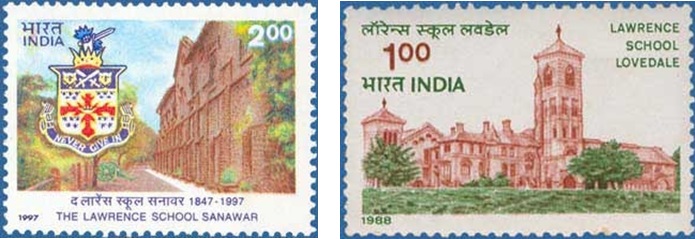
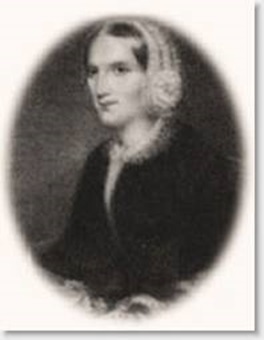




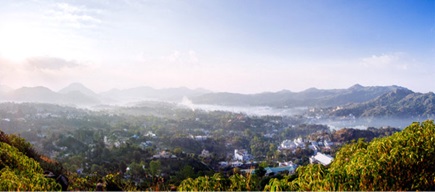
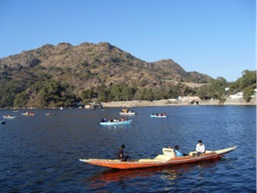

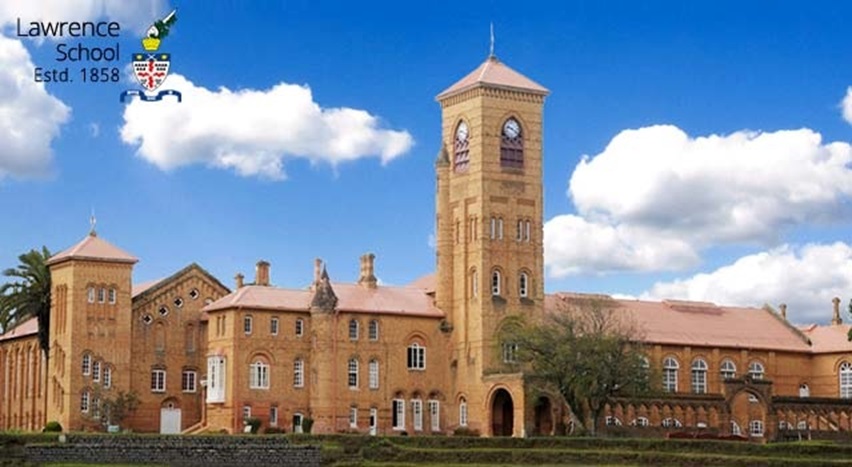
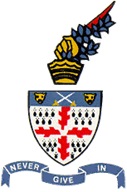
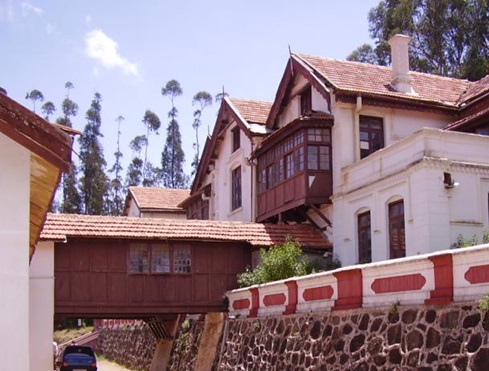
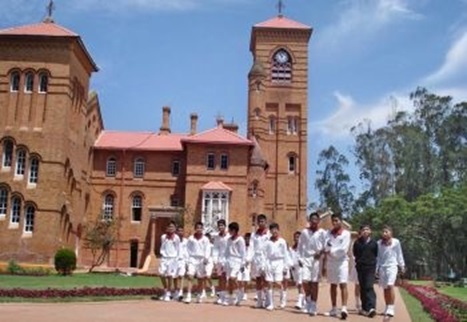

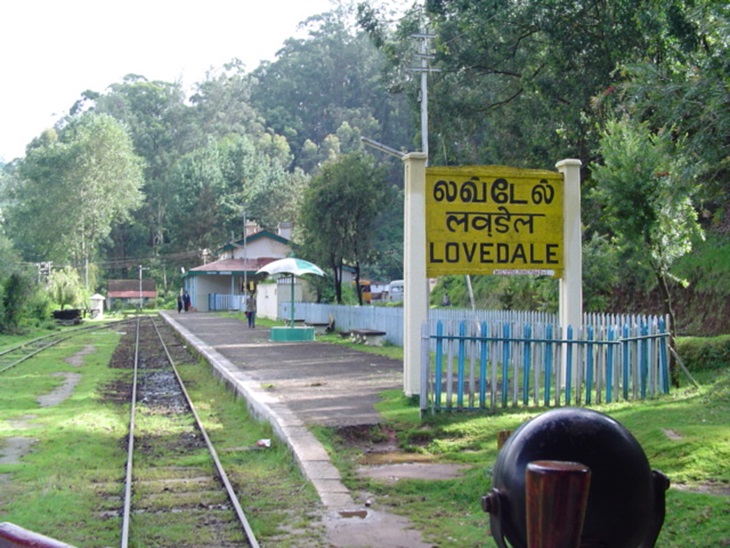
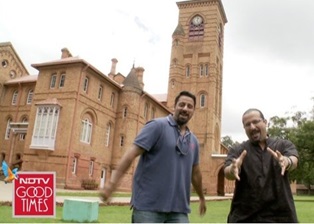


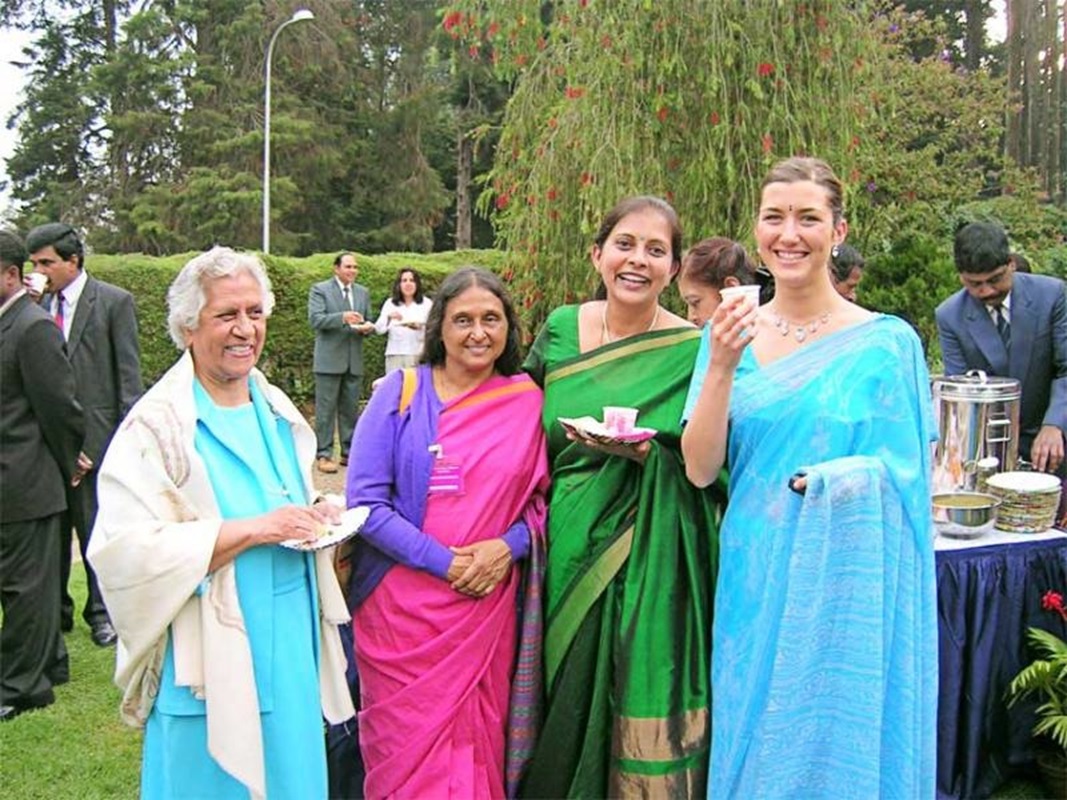
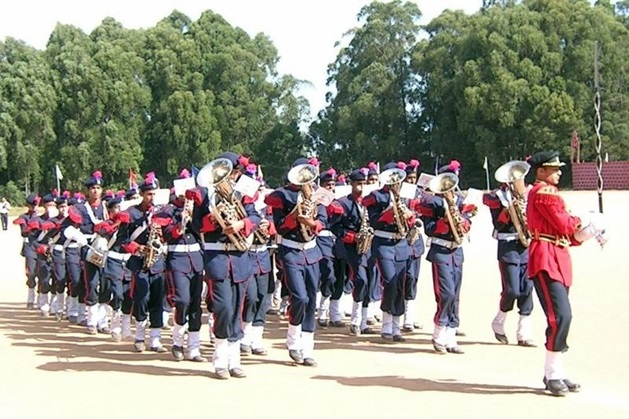

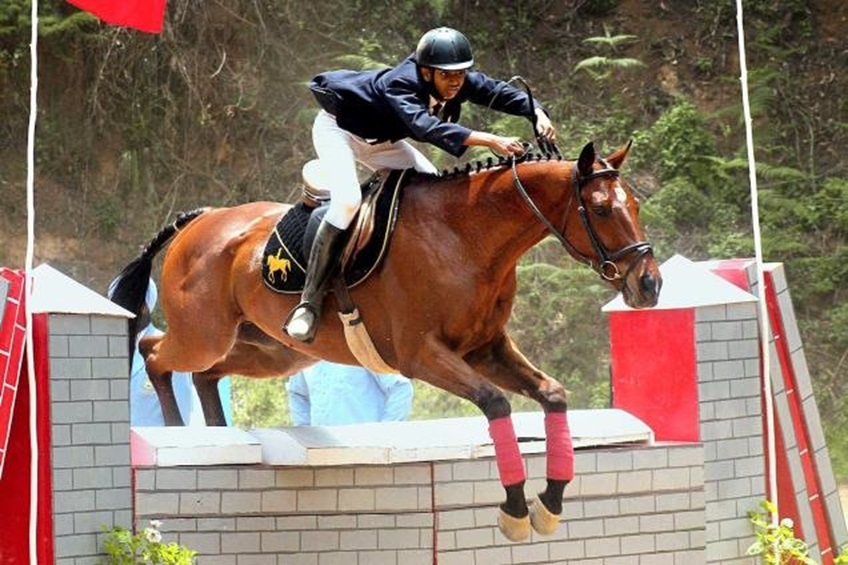

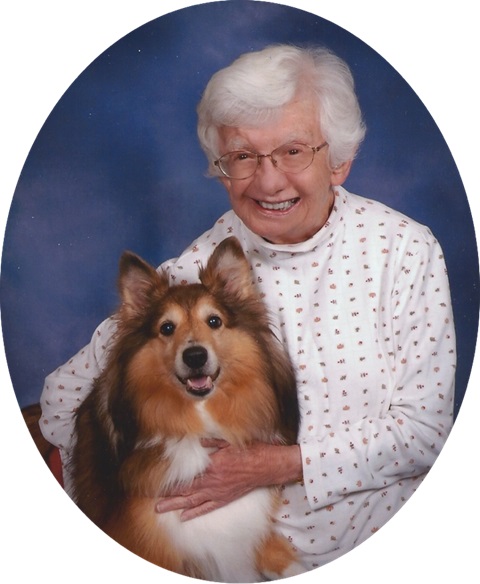
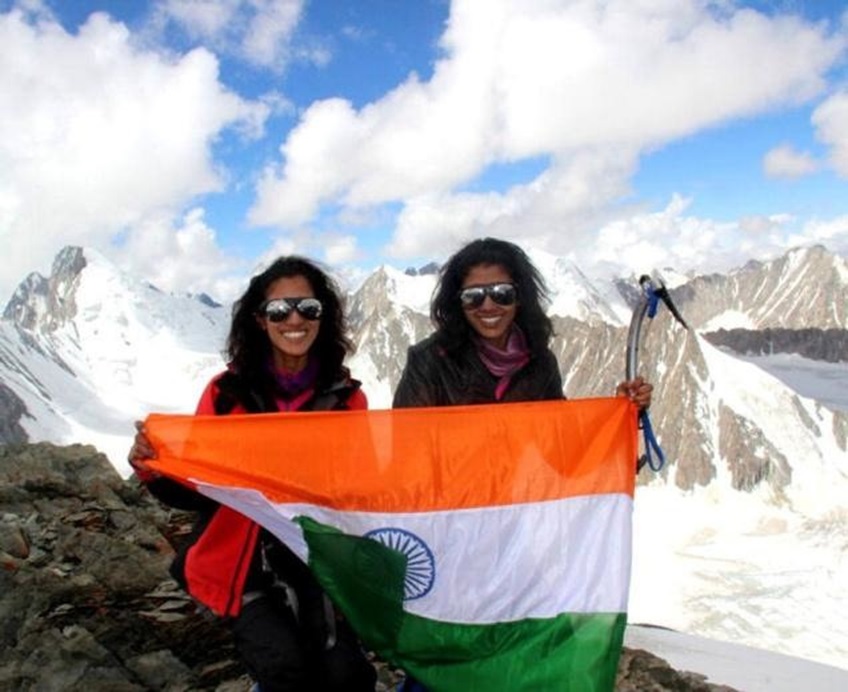
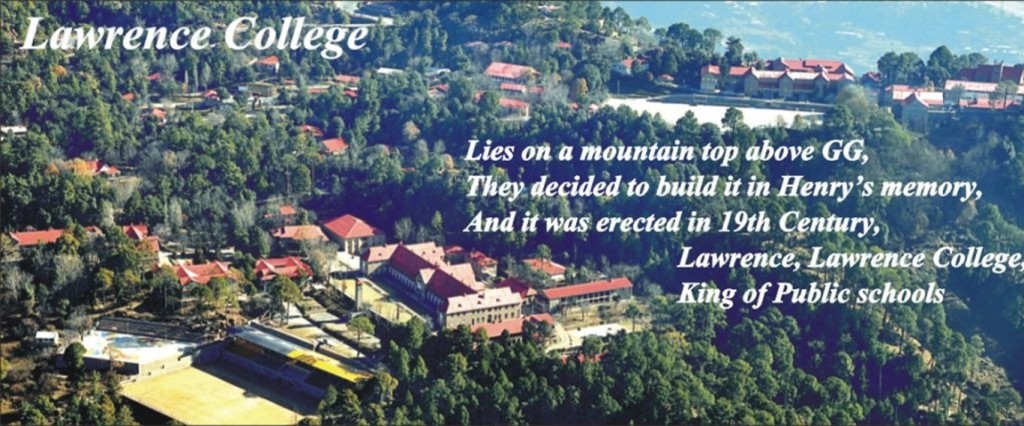





Nostalgic and good to have all this archived for future generations. Well done JT.
Chandran Sumeru51-56
Well researched and well presented article. Well done Joseph Thomas
great job
Tommy a deeply absorbing and an interesting account of Lawrence Lovedale, of course some references to an old Lawrence at Murree. Well articulated. Good job. As a parent I did not know many things about its past. Thank U.
wow. nicely done. lot of work put into preparing it. Mrs Enos, and Mrs Koshy looking so good
What a magnificent write-up, Joseph Thomas !
Thank you ever so much for the history of Lovedale. It is the best history I have ever seen – with such lovely pictures of the school, the children in formation on the parade ground and the beautiful shot of a boy horseback riding and jumping hurdles. . Thank you so much for showing the picture of Sir Henry Lawrence as a young man. Such a contrast to his later pictures and statue. He was only 51 years old when he was killed. Thank you very very much for including me in your presentation, it is a great honor to represent my generation in the history of the school.
I liked Patricia Thurley ‘s story of her family and how the children got to school via bullock cart. I remember Patsy Thurley very well in school. She was a beautiful dancer and figured in many of the shows put on by Miss Mather. My mother did tell me that before the railroad was formed through the Nilgiri Hills, the bullock cart was was the mode of travel. Patricia Thurley’s family was not the only one that was abandoned in England. I have an uncle by marriage whose father was a British soldier. He married an Anglo-Indian in India, and took her and the children with him to England and abandoned them there. Somehow the mother managed to get herself and her three sons (one of whom had been born in England) back to India and she got them into the Lawrence School in Ghora Gali. . All three sons did very well in Ghora Gali – two became physicians and the third a school teacher.
I am in the process of making a will. Neither my brother nor I have had children. For this reason I would like to leave some money to the Scholarship Fund in the Lawrence School in Lovedale. Could you advise me on whom to contact.
Once again, thank you for writing such a marvelous story of the Lawrence School in Lovedale.
With best wishes and many thanks,
Moira
Thanks Moira. You are very kind.
Thomas,
As I was going through this, it occurred to me that there is a subtle difference between the GG school, at Murree(Pakistan) and the two in India. All the four schools were meant to be ‘military asylums’ . Whilst they have all retained their military touch, the students from the Indian schools do not aspire to join the military any more. Also, the Headmasters of the GG College are all retired officers from the military. Here, we just have one or two names which carry a military rank.
I have one more observation to make. As far as I can see no more than one percent of Indian Children can be admitted to such elite schools. Even the English medium day schools are out of the reach of the average Indian. No more than ten percent of our population can afford their fees. The remaining students have to be satisfied with the schools where the ‘Aam aadmi’ is. And so just as we remember the unknown soldier by saluting at his grave, we must also pause to think about them for one little moment.
I belong to the masses, who attended the nameless ‘Janata’ schools. I was admitted into the elite “St Joseph’s Academy, Dehradun” in Sep 1949, but since I did not know English, Brother Burke requested my father to put me in some other school. During the next eight years, I attended five schools in Prem Nagar, Delhi Cantt, Meerut and Allahabad, (their names are of no consequence) before joining the NDA with you in Jan 1958. In our schools English was ‘introduced’ in Class VI and all other subjects were taught in Hindi Medium. I confess I had a lot of difficulty, coping up with you and your ilk, but I suspect I did get along!
On the plus side, I did have one advantage: I had learnt Urdu, Hindi, Punjabi and a bit of Sanskrit. And this knowledge is invaluable for understanding our scriptures and savouring Urdu poetry. I started writing early in life, and had completed my first novel in 1961 when I was just twenty. It was in Punjabi. My first venture of a full length book in English had to wait until 1988, and that was with your help!
Here is my salute to my alma mater(s)…may their ilk press on and live shoulder to shoulder with the Sanawarians, Lawrencians, Doscos and the ex-students of Sherwood College and the Mayo School.
Long live ‘Janata Schools’ and may the Aam Aadmi struggle for his place of honour in India!
Surjit
Surjit, agree with you. Ghora Ghali, Sanawar and Lovedale were run by trusts sponsored by Army HQ. By 1949 Sanawar and Lovedale were on the point of closing down and were transferred to Min of Education. They steadily lost their military character. However, I suppose that Ghora Ghali has remained with Army HQ of Pakistan.
As for differences between schools, it’s a big subject and people have different views. However, humans develop 50 % of their IQ by the age of 4. Their character is defined by the time they are 5. So the home, the neighbourhood and the kindergarten are most important. The best that schools can do is to develop the child’s personality, teach for exams and give opportunities for games and co-curricular activities.
If I have done well in academics, it is because my father and uncles taught me a lot of things in early childhood. They always answered my questions. The same with my children. I made it a point to take them around and answer their questions. Also gave them books and magazines to read.
In general, Indian parents kill the curiosity of their young children. This affects them profoundly and prevents them from understanding maths, science and engineering. Curiosity is the very basis of all three.
Long live all schools and their teachers. India has progressed a lot since 1947. Today almost all children have access to education. If the parents allow young children to explore the world around them, they will benefit immensely.
Dear Joseph
Could you pls send me Surjit Singh’s email id? I have some nice b&w pics of sanawar from my time spent there doing a workshop. Being one of the few Lawrencians who has seen both schools in detail, i’d like to send my views on the blog regarding my sense of rediscovering the Henry Lawrence heritage, the diff between the 2 schools and the need for genuine interaction and a common event between the 2 Lawrences. I think this would be of interest to many.
You could fwd this mail of mine to Mr Singh. (Is he an OS?)
regds
Dinyar
9898475478
Dear Surjit,
Many thanks for the very informative write-up on the Lawrence Schools by your friend Thomas. He has certainly worked hard to collect all the material. I’m particularly impressed as to how he managed to get a comprehensive coverage of the 150th Founder’s Day LSC, Ghoragali. Is he proposing to put all this on a CD?
Harindar
Harinder ji,
I agree with you. Thomas has worked hard, and made good use of his talent and the training in Lovedale. I am told he burnt the ‘midnight oil’ for several nights, while compiling all this information. He has exploited the full potential of the Internet, and I notice that he has many contacts, all around the globe. Once a piece is created on the electronic medium, it can be used anywhere. I have noticed that some pieces simply go viral!
With best wishes,
Surjit
Joseph,
Excellent work.
Regards
Surjit
Thanks.
Would you please check with Thomas about one M G Gopal Rao,
Who passed out from Lovedale in 1958 or 1959. We joined B Sc course in Osmania University, College of Science
In July 1959. I left in end 1960 to join IMA and he left a little later and joined the Air Force. Never met him after I left.
Heard he had a flying accident but survived that. He was a toughy and an occasional bully but we got along well. With another
Friend and classmate, Ishwari Prasad, who, also I never met, but learnt that he joined Corps of Engineers, possibly as a Techie.
Three of us got together, got a syringe, Ishwari’s dad was a doctor, and stole Mercury from the Science lab ( Boyle’s apparatus)
Had problem selling it but we finally managed for a princely sum of 40 rupees and celebrated with beer and biryani and movies( First class ticket
Cost Rs. 1.20) and plenty to spare.
Some memories.
Have fun.
Viren
Have put out a request for whereabouts in the air force group. You are right about MG Gopal Rao. He is from the 1959 batch. Unforgettable. A bundle of pure muscle.
Yes, he went through a flying accident on the Vampire at Pune. The engine failed soon after take off and he had to force land straight ahead. The plywood and balsa machine withstood the forced landing but the canopy would not open. Finally, he broke it open by pushing with his shoulder. Got out before the aeroplane caught fire.
Subsequently, he flew Canberras. By then he had mellowed. We were in different stations. Lost contact after we both left the air force.
Have put out a request for whereabouts in the air force group. You are right about MG Gopal Rao. He is from the 1959 batch. Unforgettable. A bundle of pure muscle.
Yes, he went through a flying accident on the Vampire at Pune. The engine failed soon after take off and he had to force land straight ahead. The plywood and balsa machine withstood the forced landing but the canopy would not open. Finally, he broke it open by pushing with his shoulder. Got out before the aeroplane caught fire.
Subsequently, he flew Canberras. By then he had mellowed. We were in different stations. Lost contact after we both left the air force.
Very nice
but our generation is in its exit mode
hope grand kids do read it
Very nice
Joseph,
If you require any input about their respective Lawrence schools.
I suggest you contact:-
Prabhsharan Singh Kang (Sanawar)
Asif Muhammad (Ghora Galli)
I have requested them to give any assistance you require.
Thanks Kevin. I have read Prabhsharan Singh Kang’s account about
the quest for the missing Lawrence School at Mount Abu. I have given
the reference of his article.
This blog is owned by my friend Surjit Singh. He has already requested
several OS in Chandigarh to write more about Sanawar.
Surjit originally requested me to write about the two Lawrence
Schools in India. I needed to write so much that he agreed to two
articles, one on HML and the other on the schools. When I got into
it, I found that a third article on the Paladins of Punjab is also
required. Now I’ll write that after the holiday season.
As for Ghora Ghali, I included it and Mt Abu for completeness. I have
given the reference of their website and also linked to some videos.
Both Sanawar and Ghora Ghali have websites. There are also several
books on Sanawar. So I really don’t need to write anything more.
So much to read in such a short time. Will do the next instalment tomorrow.
Videos are brilliant.
Dave Sood